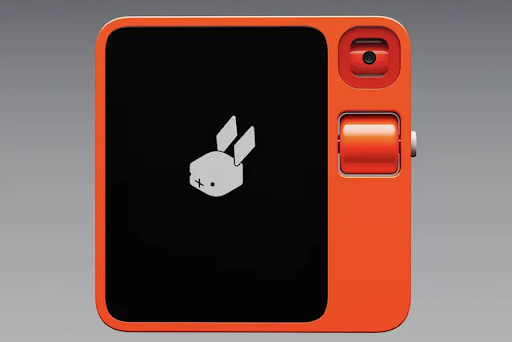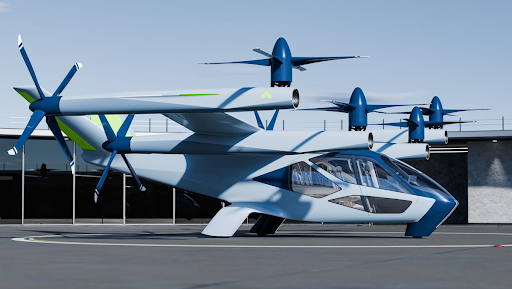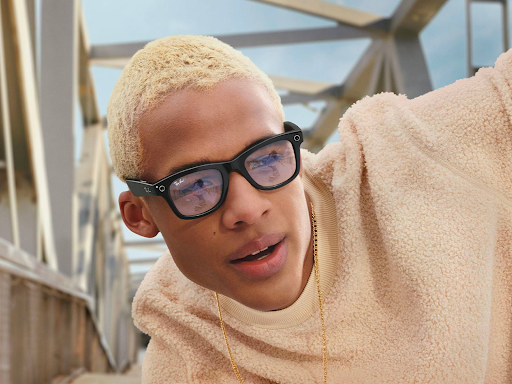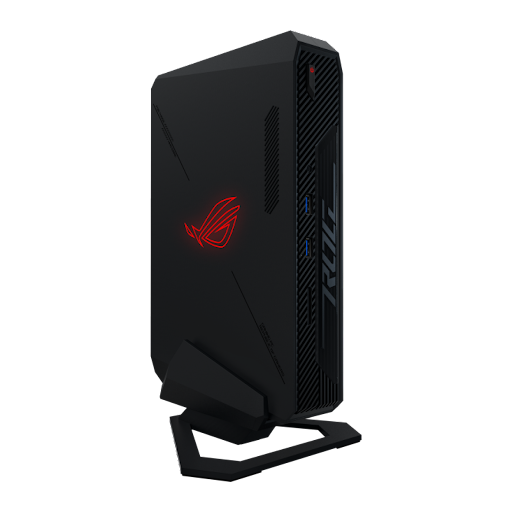What the defining products and categories mean for marketers
As promised, the second week of January was full of transformative technology and connection. Omnicom Media Group (OMG) was in Las Vegas at the centennial of the Consumer Electronics Show (CES).
We hosted our own events, sat in on some amazing talks, and experienced the most groundbreaking technology being developed—from flying cars to digital sign language interpreters.
Overall, CES saw 15% growth from 2023, welcoming more than 4,000 exhibitors, including 1,400 startups from more than 50 countries, while 250 conference sessions with 1,000 speakers engaged and inspired.
The panels explored broad trends like the rising tide of Gen Z—now a quarter of the population and emerging as true technophiles—and the implications of AI and greater connectivity through private satellite technology.
We’ve gathered some of the most exciting areas of innovation and products making waves—and what these trends might mean for marketers this year and beyond.
AI dominates—but not in the tech you might expect
You won’t be surprised to hear that AI dominated conversations and innovation at CES this year. But instead of software—open source or not—much of the buzziest AI at the show was linked to personal gadgets.
Take, for example, Humane, a wearable screenless AI-powered alternative to using a smartphone. The pin can answer queries and use its outward-facing camera to read the nutritional value of your lunch or keep track of your protein intake for the day.
More personal AI tech included the Rabbit R1, a handheld device that responds to complicated, multipart voice commands.
You can ask Rabbit R1 for simple stuff, like a dinner recipe, or have it do all the searching, comparison, and clicking to purchase a plane ticket.
Think of it as your AI-powered personal assistant.
This kind of AI may impact how consumers interact with content online—a point for brands to consider as AI handles more searching and interaction with online text, shopping carts, and customer service.
The Rabbit R1 (rabbit.tech)
Mobility dominates while the EV reigns supreme
While CES used to primarily focus on gadgets and PCs, vehicles—which fall into a category CES broadly defines as “mobility”—have more recently stolen the show.
This year, we got a major reveal from Hyundai, which debuted the Supernal S-A2, a flying car capable of speeds up to 120 mph at 1,500 feet.
Seating five, with lift and tilt powered by eight tilting rotors, the Supernal has something in common with many of this year’s more popular vehicles at the show: It is all electric.
As hype died down around self-driving cars, many companies have returned to developing electric vehicles (EVs), which have grown into a major market. Between 2020 and 2023, global EV sales climbed from $3 million to $10.25 million—and are still growing. The newest models are more like software-defined vehicles (SDVs), with functionality that can be tweaked via over-the-air updates.
SDVs may represent a paradigm shift for makers, marketers, and consumers. Centralized, connected, and convenient, these vehicles bring new benefits to consumers that will likely reset the status quo in the coming years.
The Hyundai Supernal S-A2 (hyundai.com)
Health tech shifts focus
Health tech at CES always dazzles. From sophisticated sensors that track vitals to urine analyzers, home health, in particular, has dominated conversations at CES. This year, developers shifted their work toward one specific demographic—women.
Sometimes called “femtech,” this category showed growth at this year’s CES. Innovations included a new product from Irish startup IdentifyHer, which is developing a wearable sensor that tracks menopause symptoms and their frequency and severity, and it can also deliver a cooling effect during hot flashes.
Femtech includes beauty, and L’Oreal delivered a keynote at this year’s CES, illustrating the growing importance of AI and ML in beauty. It was also the first-ever CES presentation by a chief executive of the beauty industry.
Women are major drivers of the economy, but for too long, brands have neglected women 50 and older. This year’s innovators at CES are leading the way in changing that. With over $15 trillion in buying power, older women are a demographic that marketers would do well to consider.
IdentifyHer (identifyher.ai)
A boon for inclusive tech
This year, CES Unveiled, the expo’s media and press event, featured several innovations developed to serve people with disabilities, highlighting major advances for inclusive technology. French company Ives brought the Iris Signbot, which interprets and generates sign language to serve the deaf community.
We also saw AR goggles and apps that describe the environment to users in real time, locating objects to make navigating the world easier for the visually impaired.
Meanwhile, optics conglomerate EssilorLuxottica debuted eyeglass frames that double as hearing aids, aimed at stylishly serving those with hearing loss.
Inclusivity and accessibility are increasingly part of the cultural conversation, and tech companies have responded with products that serve a global population of more than 1.3 billion people with disabilities.
Marketers have an opportunity to serve these communities more holistically, too—and not just by touting inclusive technology. Inclusive practices in copywriting, like using camel case in hashtags (e.g., #HeartsAndScience), alternate text in images, and going beyond graphic design alone to convey meaning, can all have an impact.
The Nuance Glasses from EssilorLuxottica (essilorluxottica.com)
Still dreaming up the metaverse
CES 2024 saw a breakthrough in the world of immersive technology, also known as “the metaverse.” Global tech firm Siemens, for example, announced new partnerships aimed at making the industrial metaverse a reality based on Xcelerator, its open digital business platform.
The company [Siemens] envisions a world where people can work alongside AI in a virtual landscape to accelerate processes, scale faster, and enhance innovation.
Virtual doctor’s visits and even virtual concerts are fast becoming a reality, too. Startup Soundscape highlighted its musical metaverse. It supports avatars in a VR environment for an immersive musical festival experience without the travel, camping, and sweating.
It must be on to something since the company recently announced partnerships with GRiZ, Slash, Evanescence, Goose, and other tech innovators, with more to come.
As the metaverse moves from dream to reality, more companies will build their own worlds to represent their brand, creating fully immersive experiences for their customers. The metaverse may open up whole new ways of advertising, and while the technology is still new, it can offer opportunities to have a tremendous impact without much competition.
Soundscape VR Concerts (soundscapeuniverse.com)
Gaming goes big
The movement toward accessibility has even extended into the world of gaming. Sony showcased its new Access controller at CES, aiming to make gaming more inclusive. For people with limited mobility, using PlayStation, Xbox, or Nintendo controllers can be difficult, if not impossible. The Access controller has customizable buttons, grips, and joysticks to meet the unique needs of every gamer.
Other standouts for gamers of all stripes were Razer’s Project Esther, a cushy HD haptic chair cover with 16 feedback sensors to deliver a more fully immersive experience.
ASUS also launched the incredibly compact ROG NUC, a gaming PC that weighs in at just 1.76 pounds and is less than two inches wide. Many manufacturers are now in a race to build the smallest, most powerful gaming devices possible, a move that was evident in this year’s offerings.
The expansive presence of gaming devices, software, and accessories at CES this year is indicative of broader trends. More diverse segments are picking up gaming (whether on PCs, gaming consoles, or smartphones), and the tech is becoming more and more competitive to meet the demands of a large (3.07 billion and counting) and engaged market.
With this growth, new frontiers are being accessed by marketers, including more dynamic in-game advertising, a channel that could spell big returns as the gaming demographic grows.
The ASUS ROG NUC (asus.com)
The future is now
What happens at CES defines many of the business conversations and partnerships that happen throughout the year. For marketers, it’s an opportunity to access innovation at the ground floor and get the inside scoop on the direction of many markets.
This year’s event revealed a lot about where AI is headed (personal gadgets), the demographics emerging as powerhouses (women over 50), and how tech companies are meeting the culture where it’s at (EVs and inclusive technology).
Marketers can stay ahead of the game by paying close attention to events like CES and which businesses and products are garnering the most excitement. But it’s not just about what companies are showing—it’s also what they’re saying. At OMG, we couldn’t be more excited to continue participating in industry-defining conversations.






